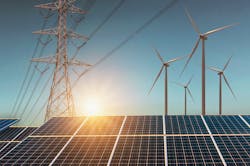SEPA Report Offers Glimpse into Next Generation of Demand Response
Based on data collected from 190 utilities, which represents 64% of total U.S. customer accounts, the Smart Electric Power Alliance (SEPA) recently found that utilities enrolled 20.8GW of demand response (DR) capacity, and dispatched 12.3GW of DR capacity (59.2% of enrolled capacity) in 2018. Furthermore, the commercial and industrial (C&I) segment contributed more than half of total reported DR capacity (13.3GW). This is just a snapshot of the research uncovered by SEPA in the 2019 Demand Response Utility Market Snapshot, a report based on the results of its Annual Utility Market Survey.
Now available for download on the organization’s website, the report details the phasing out of older programs, the introduction of advanced technologies and smart devices increasing customer engagement, and the growing diversity of program offerings. Other key takeaways include:
- Utilities are moving away from traditional DR programs, and are increasingly interested in advanced technologies, noting a shift to demand flexibility.
- Investment in thermostat programs remains strong, with 53 utilities calling on thermostats in 2018, and 17 utilities indicating piloting or expanding their thermostat programs in 2019 and beyond.
- 54 utilities reported offering behavioral DR programs, with these programs using two different approaches: traditional event-based programs and time-based behavioral programs. Behavioral programs, regardless of approach, are using advanced customer engagement strategies to prompt participation.
- Programs are increasingly providing customers with options that use smart home and voice-enabled devices. The success of these programs relies on customer engagement and education.
- 38 utility-run EV-managed charging projects have taken place from 2012-2019, with utility interest continuing to grow in direct load control via charging infrastructure as well as automaker telematics.
- Three pilot programs in the U.S. are demonstrating how demand response can play a role in transactive energy.
- Clean Peak Standards and commitments to go 100% carbon-free are encouraging utilities to pursue demand response programs as part of an integrated portfolio of DERs.
“Utilities and the industry are uncovering a host of capabilities for demand response as they adopt more advanced technologies,” said Medha Surampudy, senior research analyst and lead author of the report. “In order to fully take advantage of the benefits of new technologies and programs, customers need to be engaged, educated, and feel invested.”
